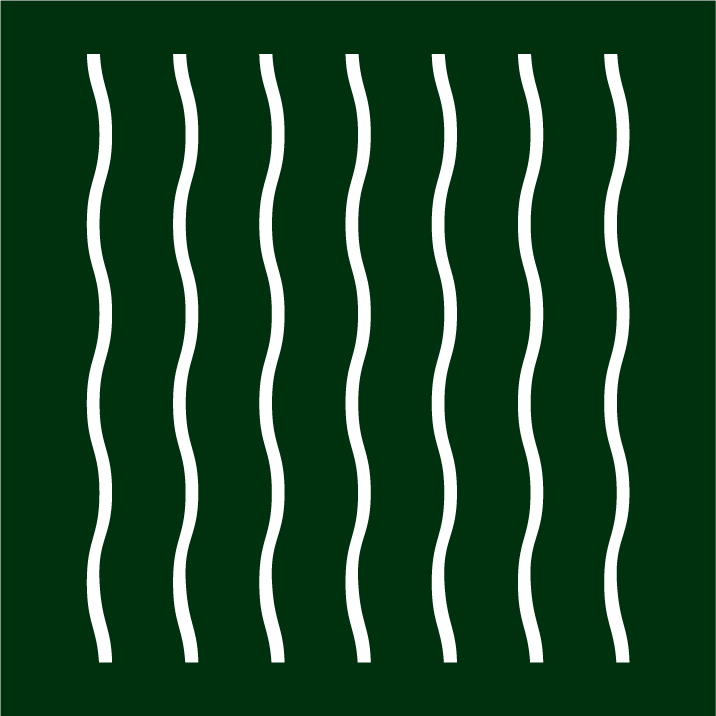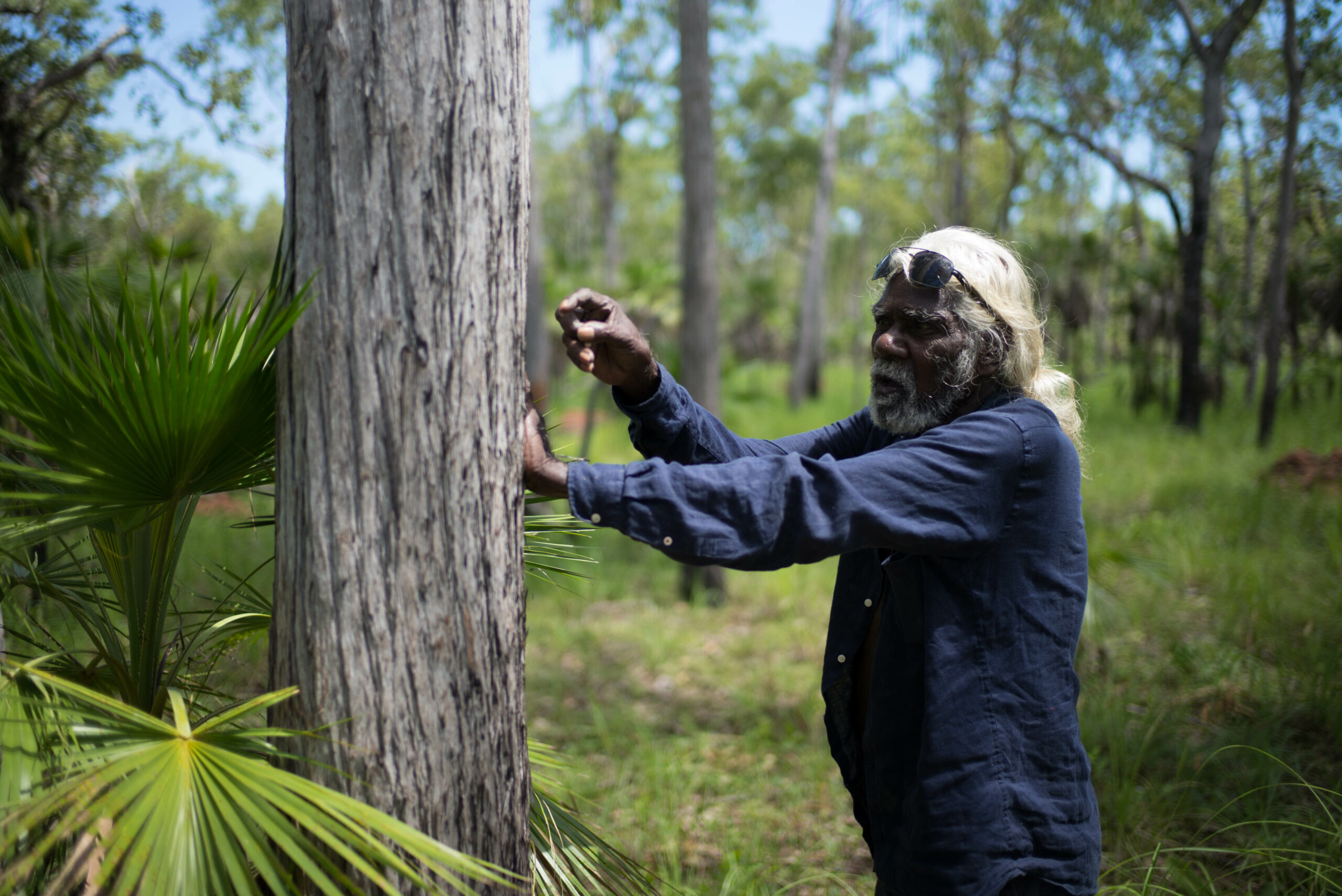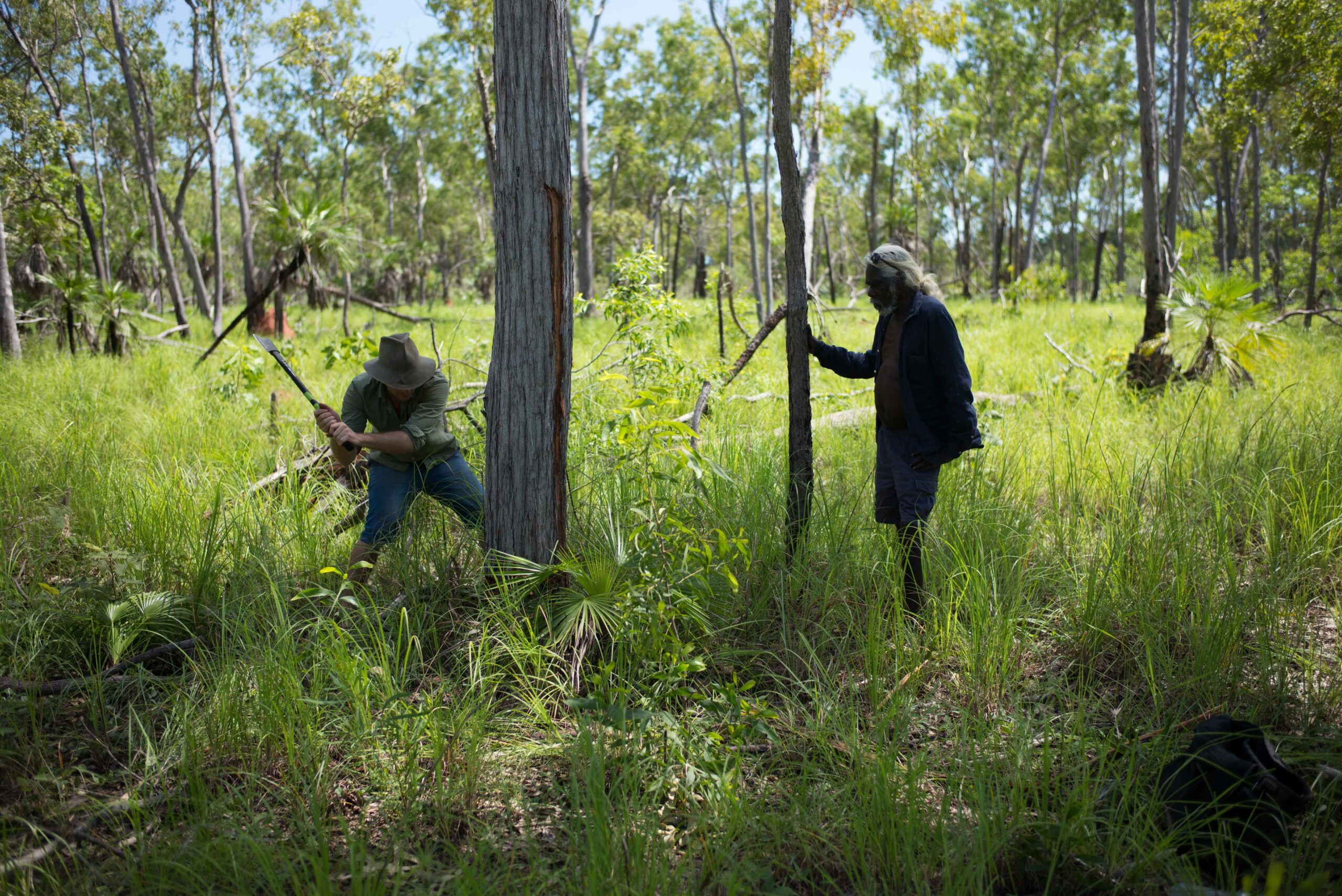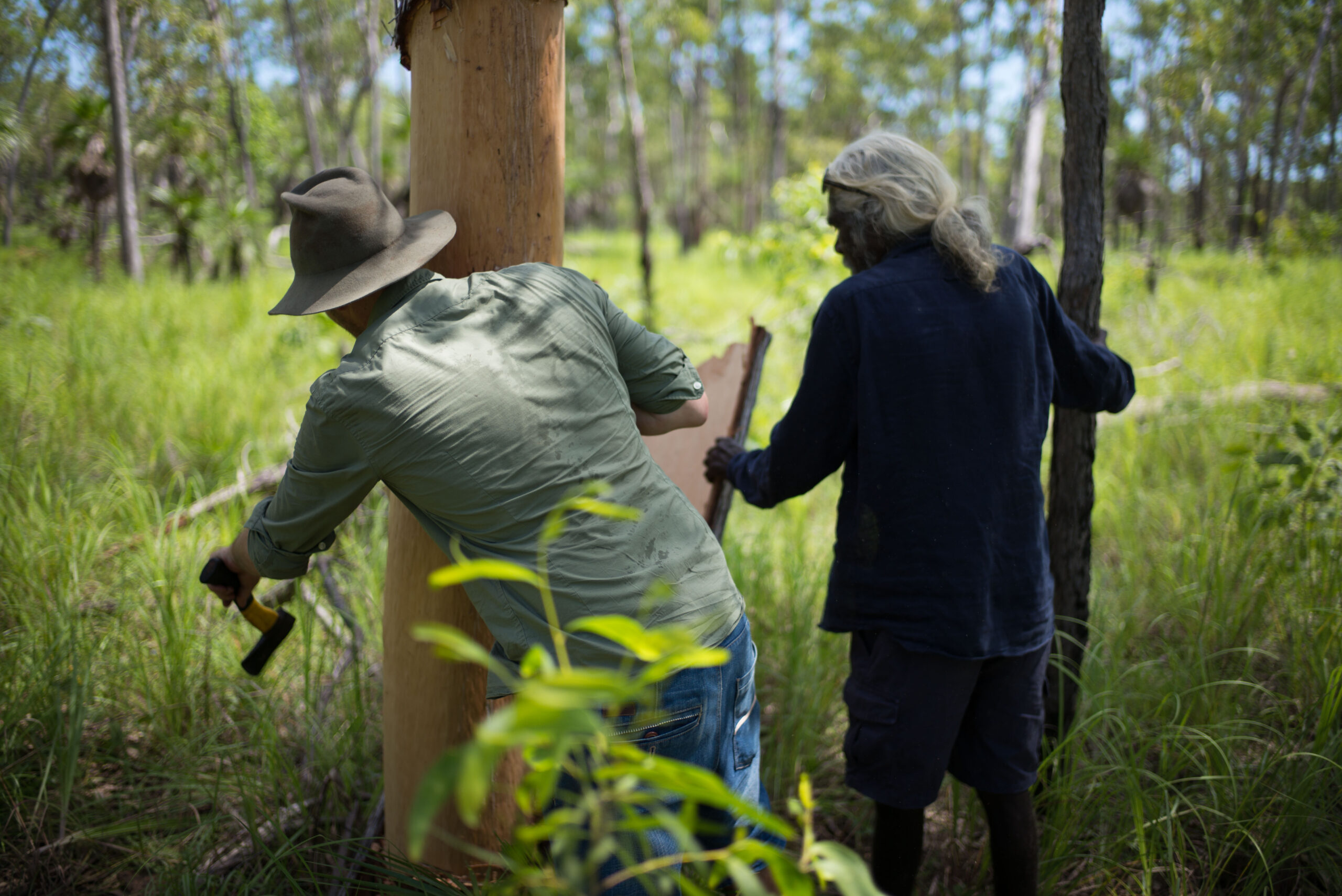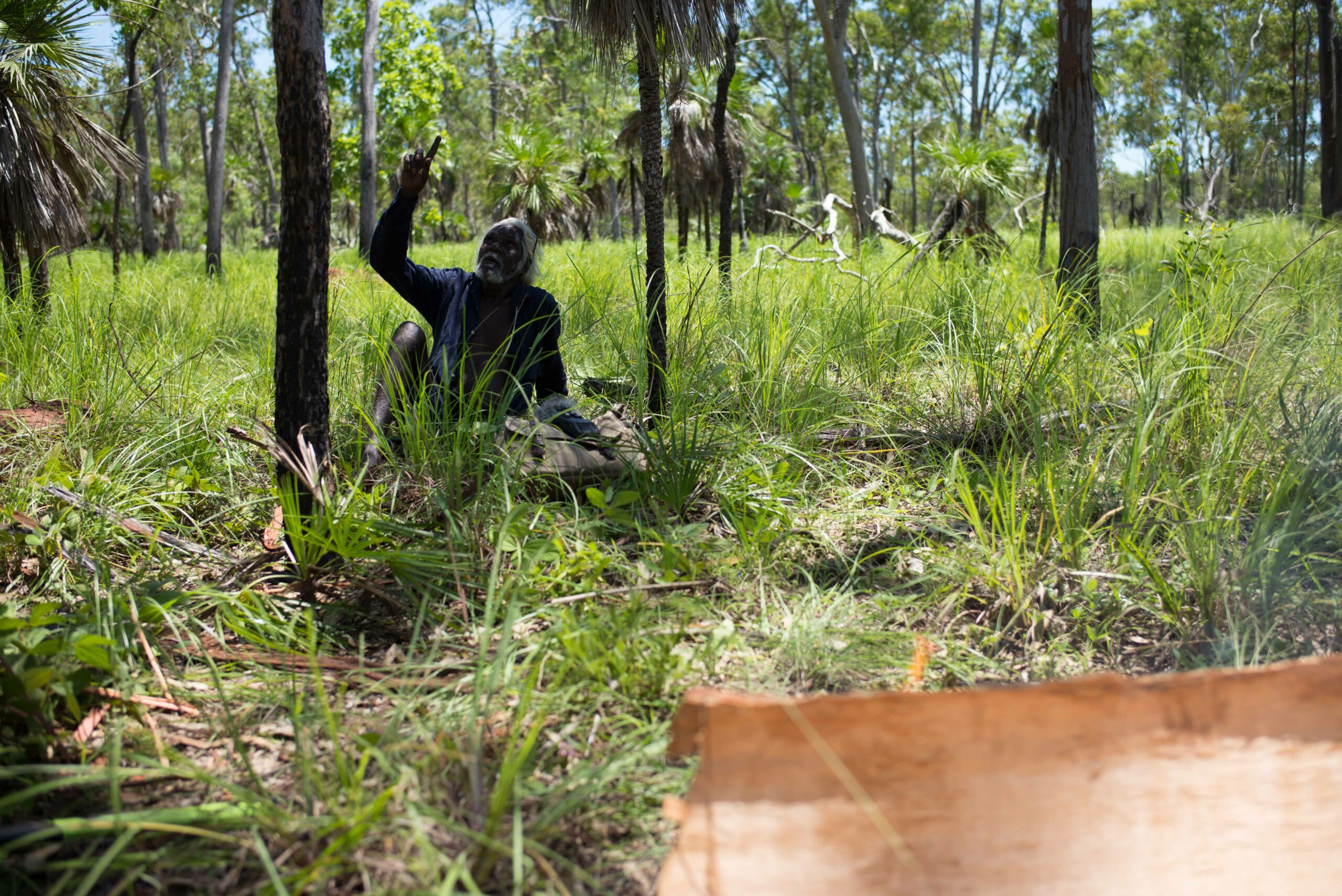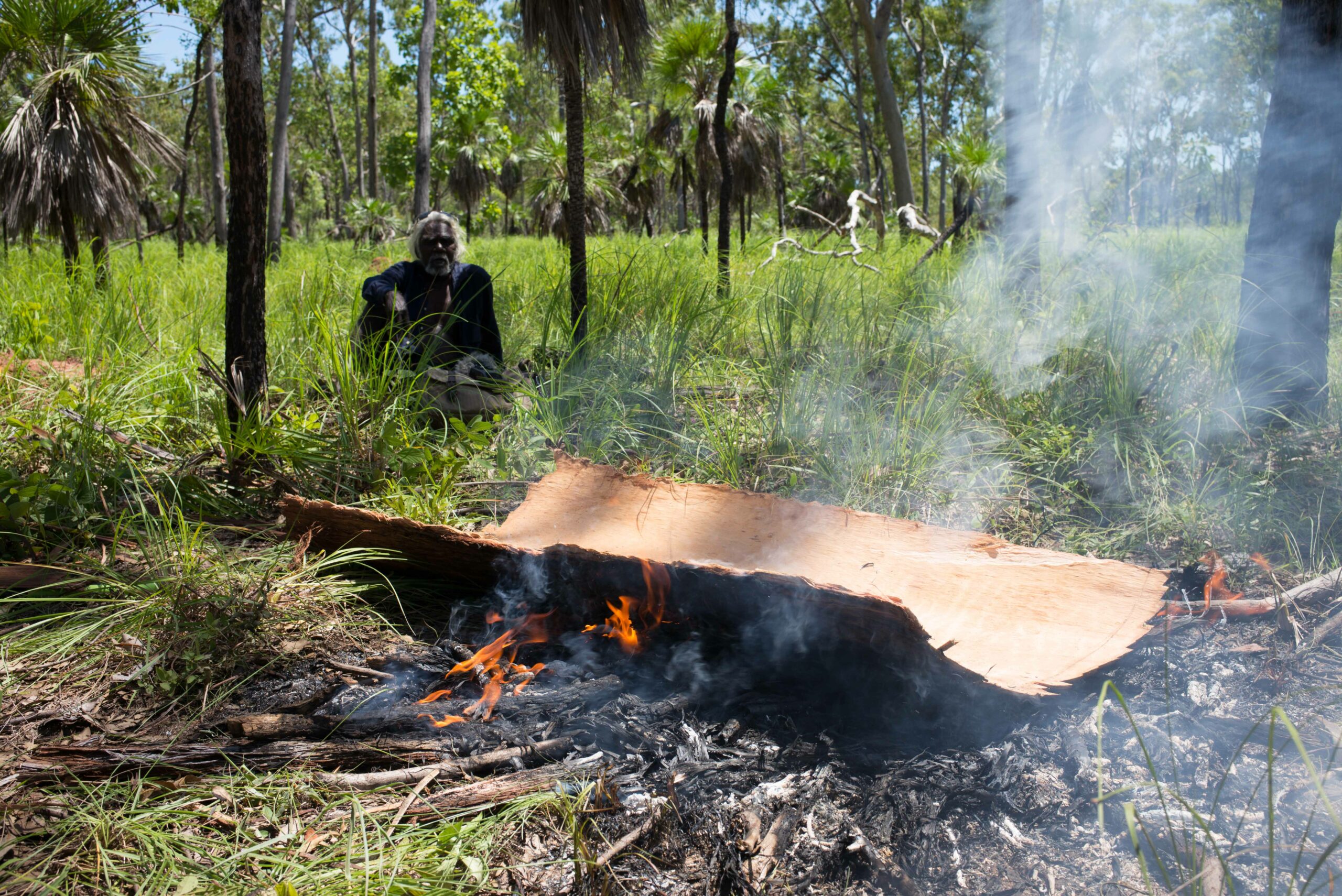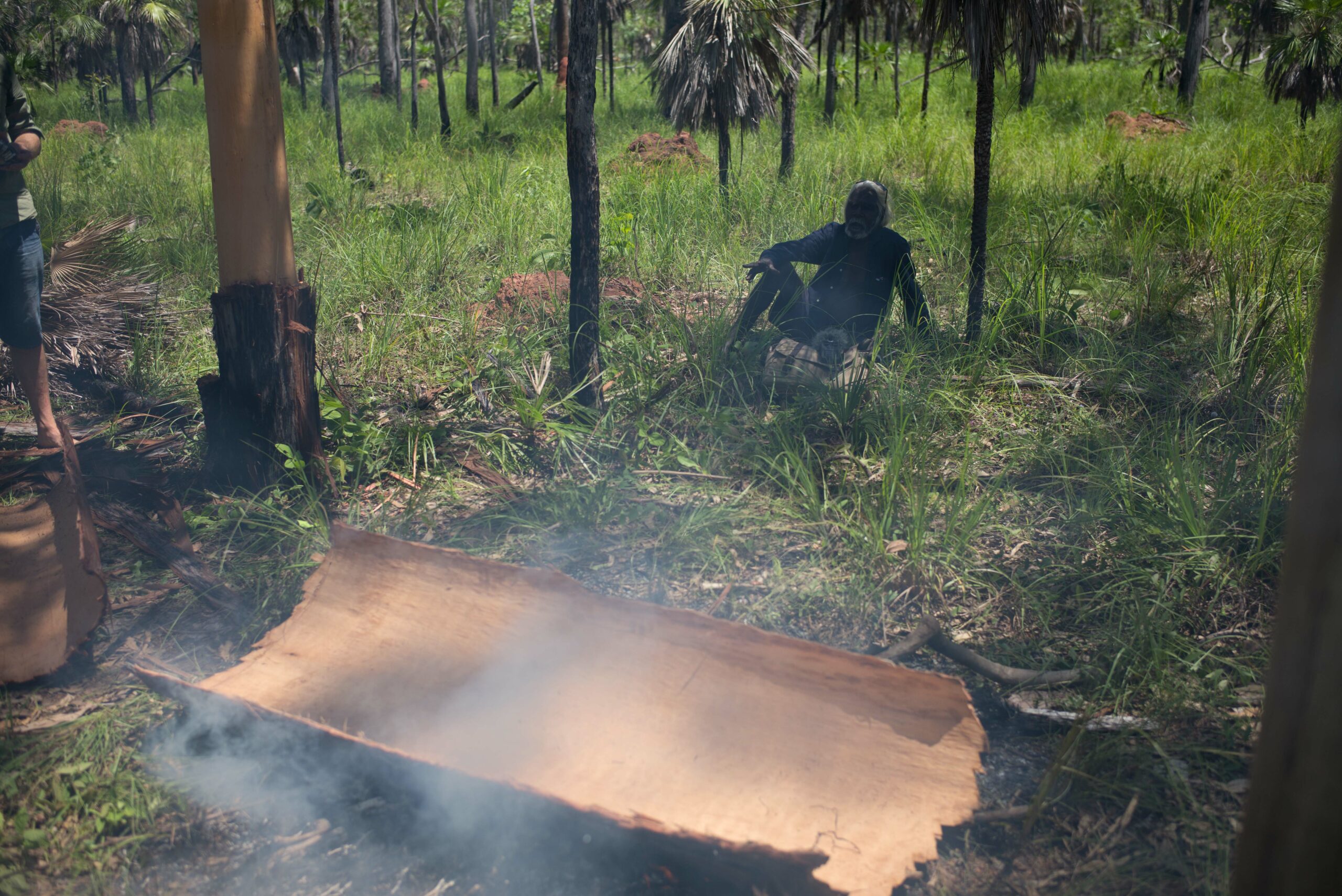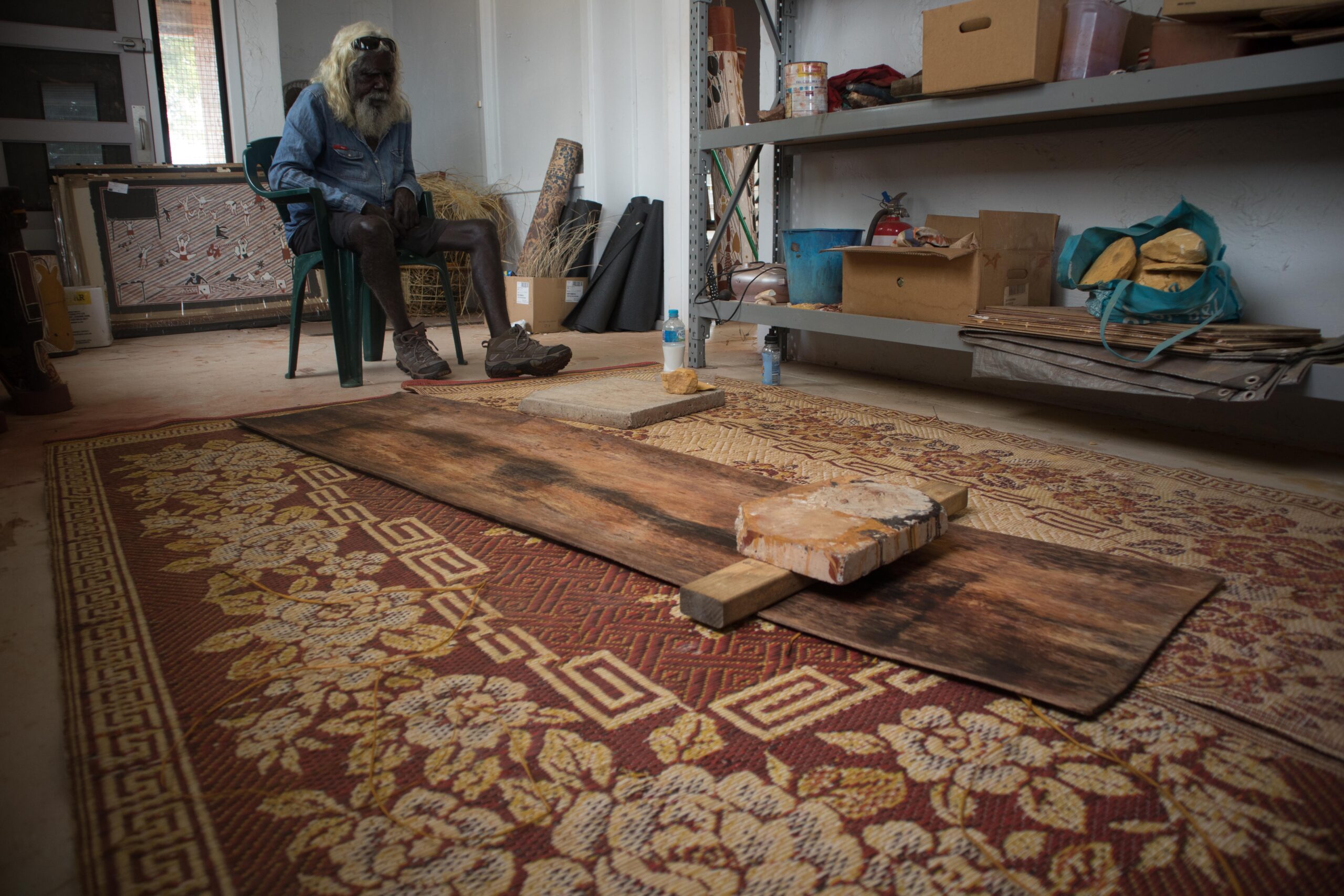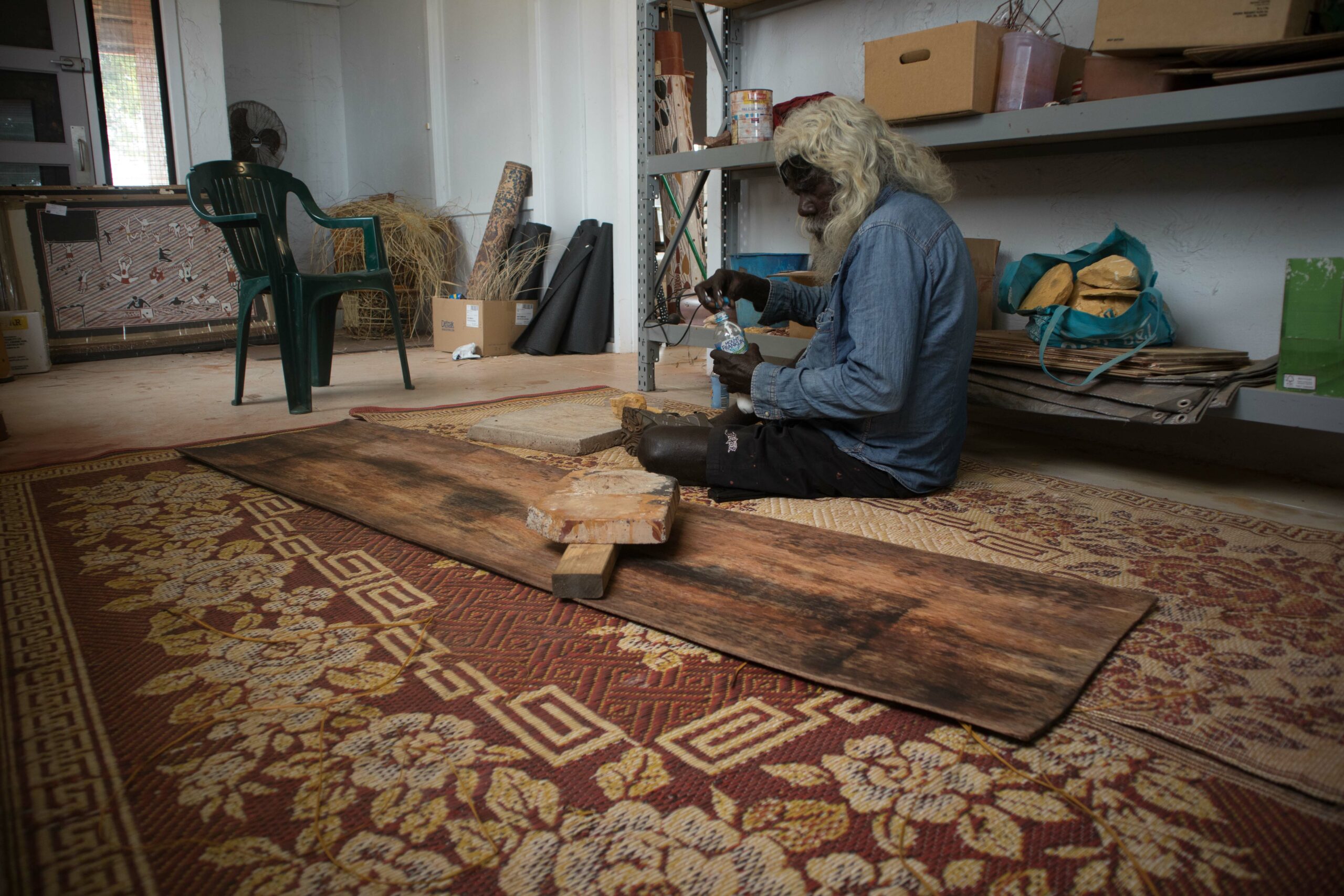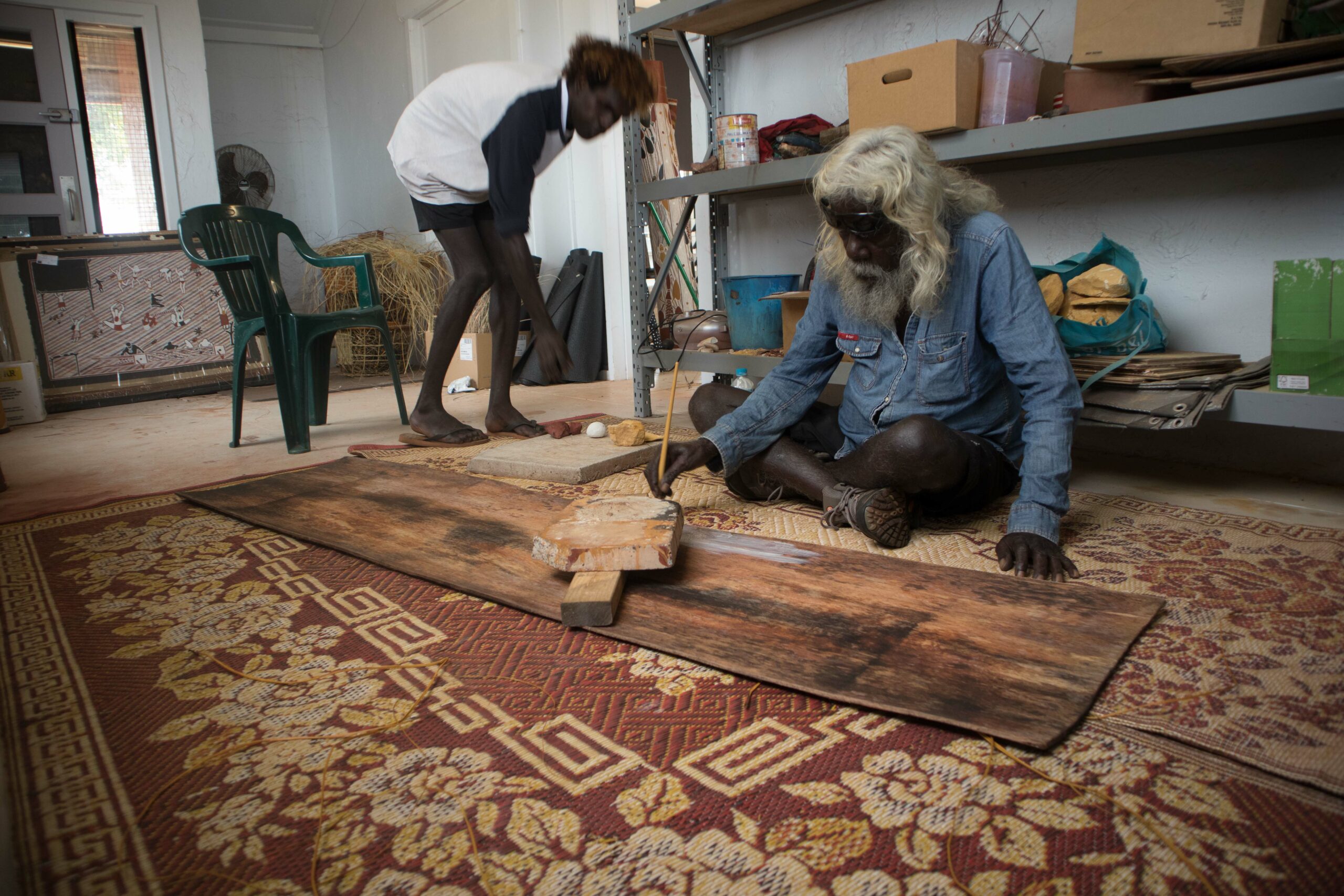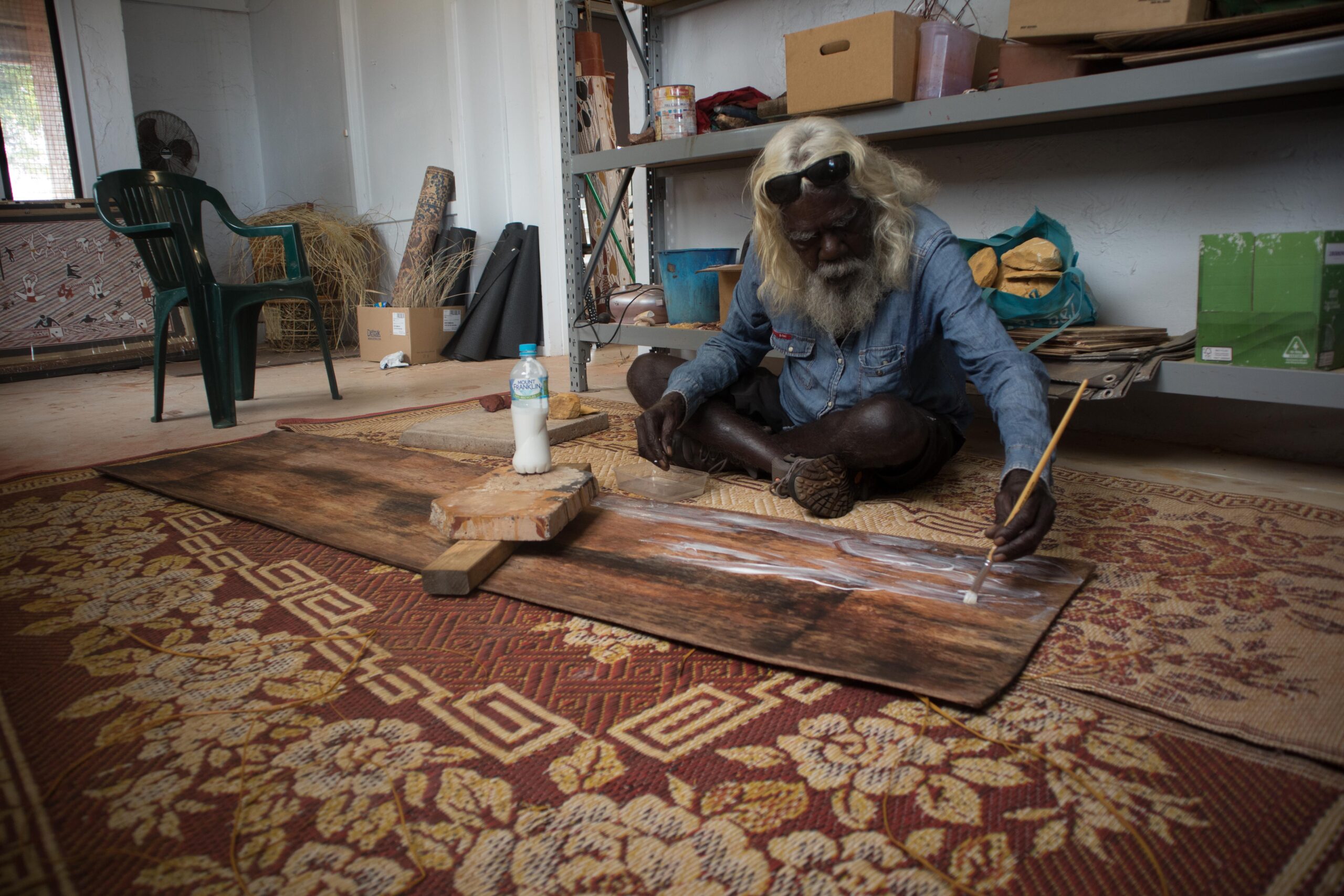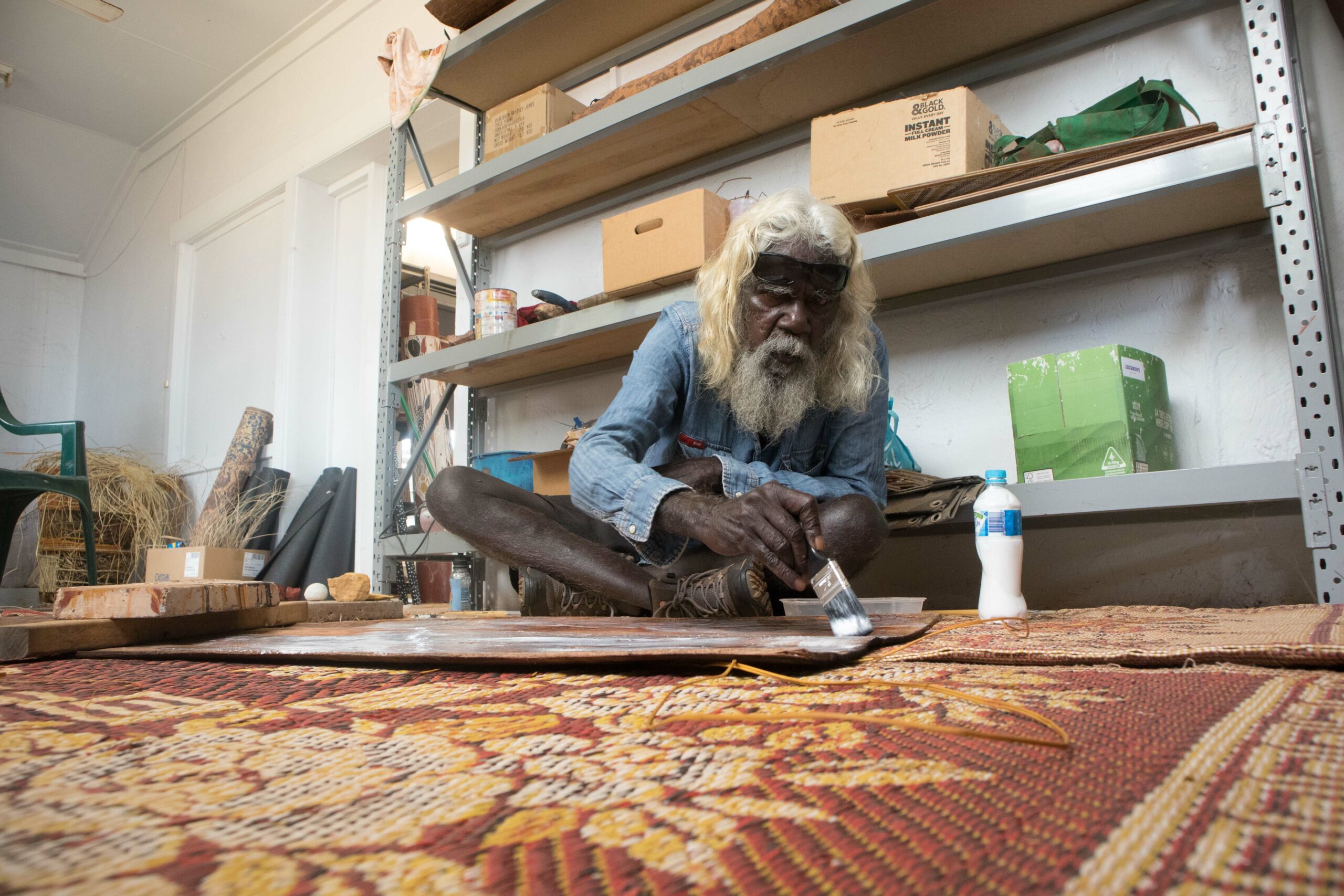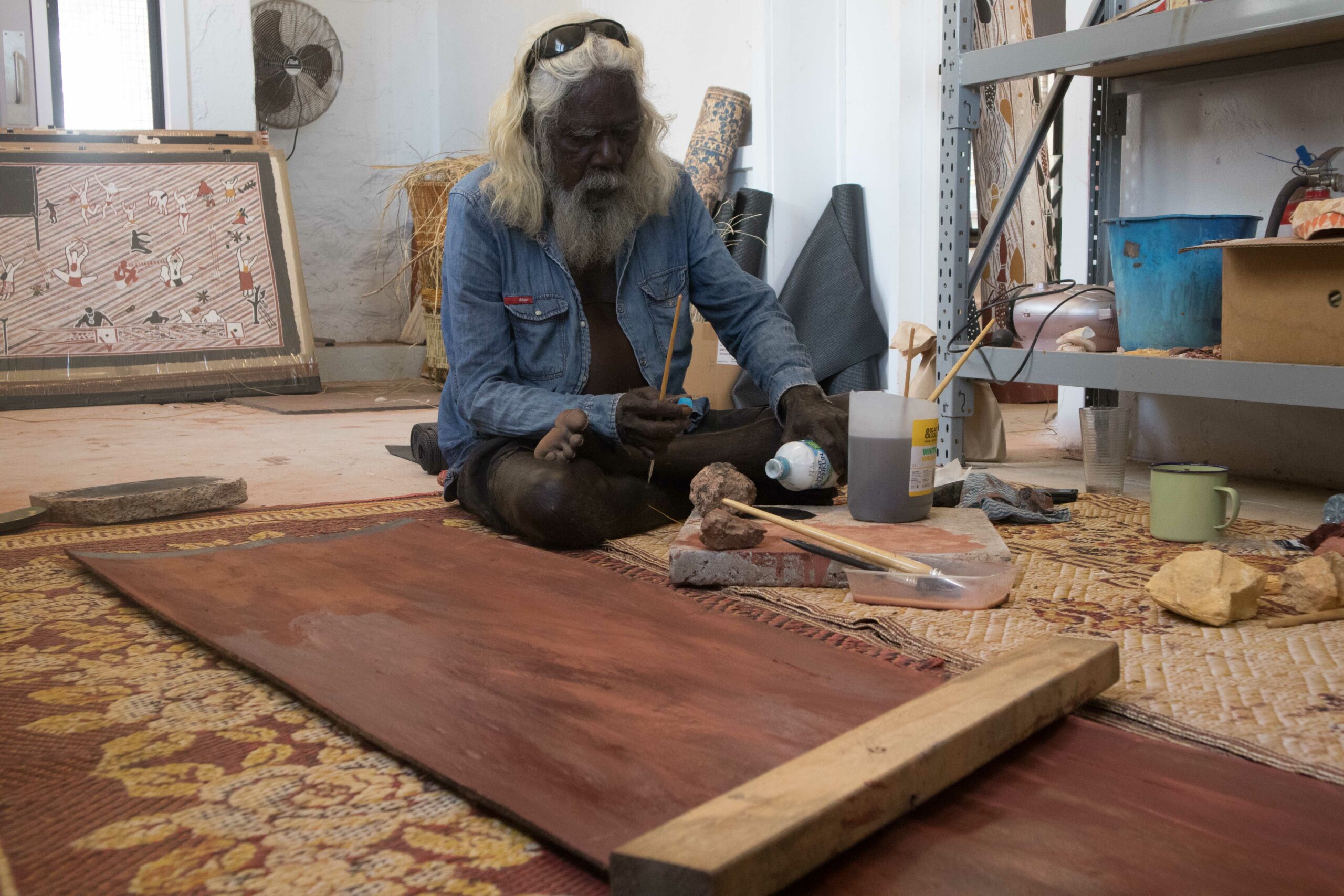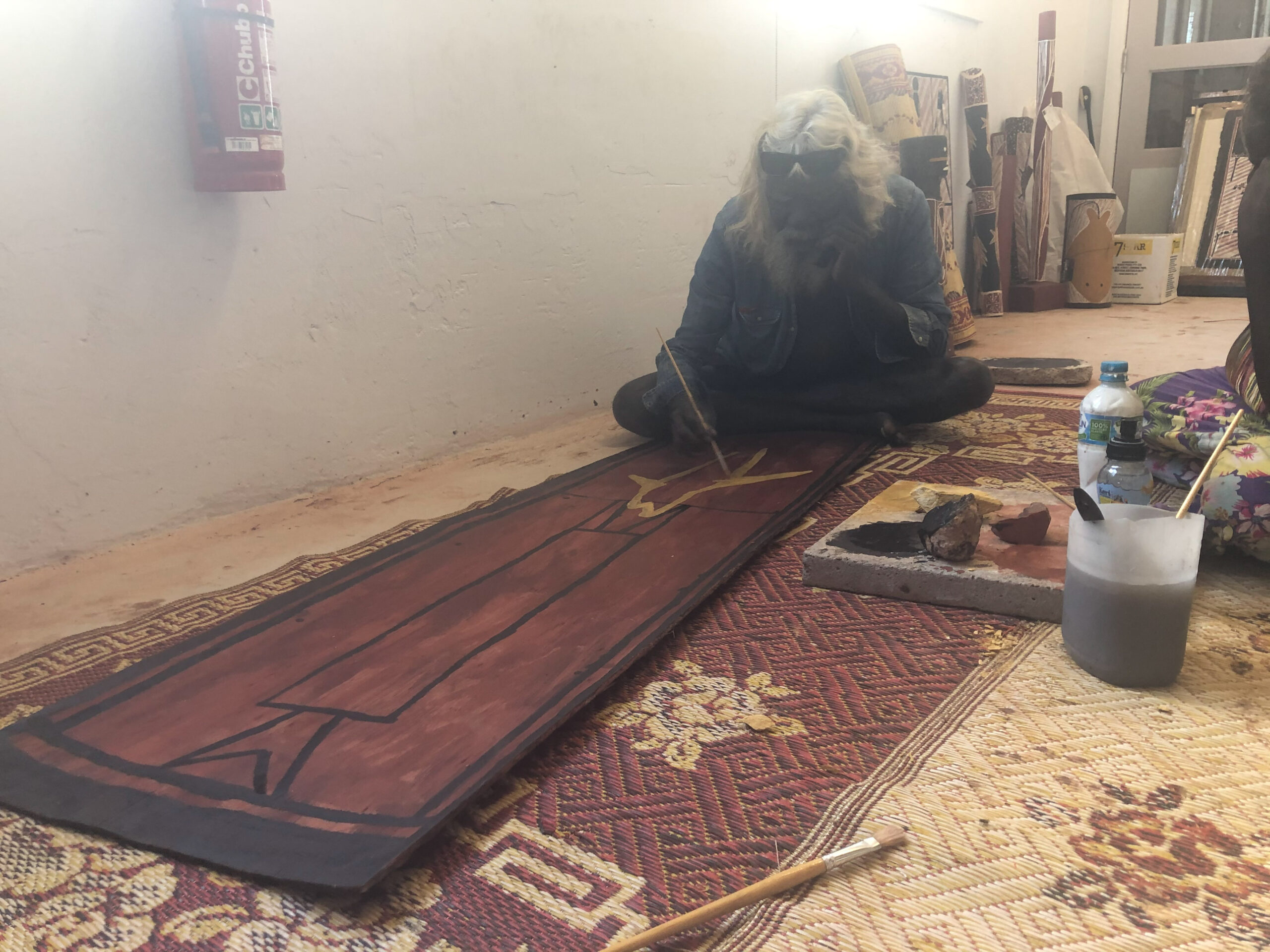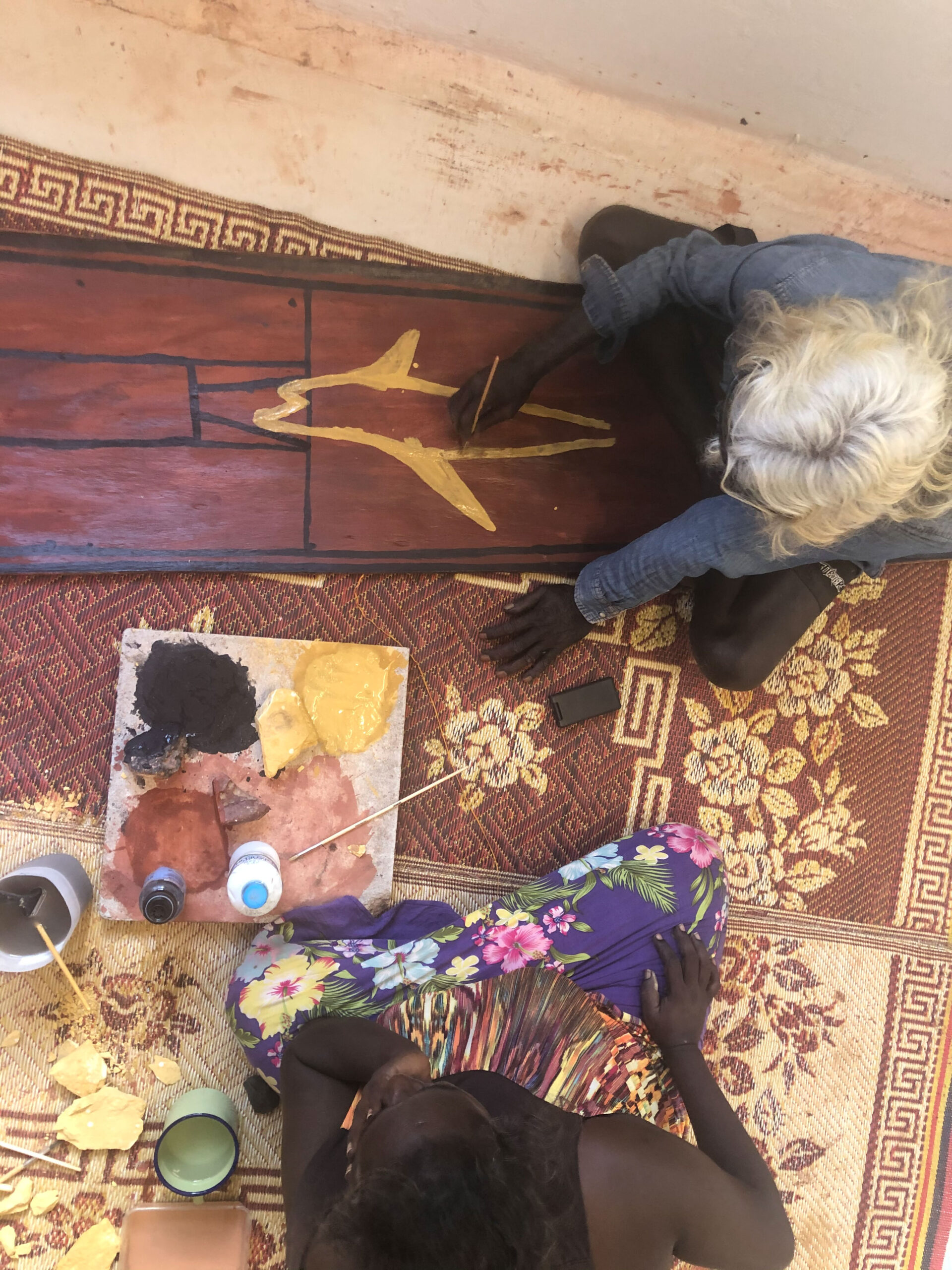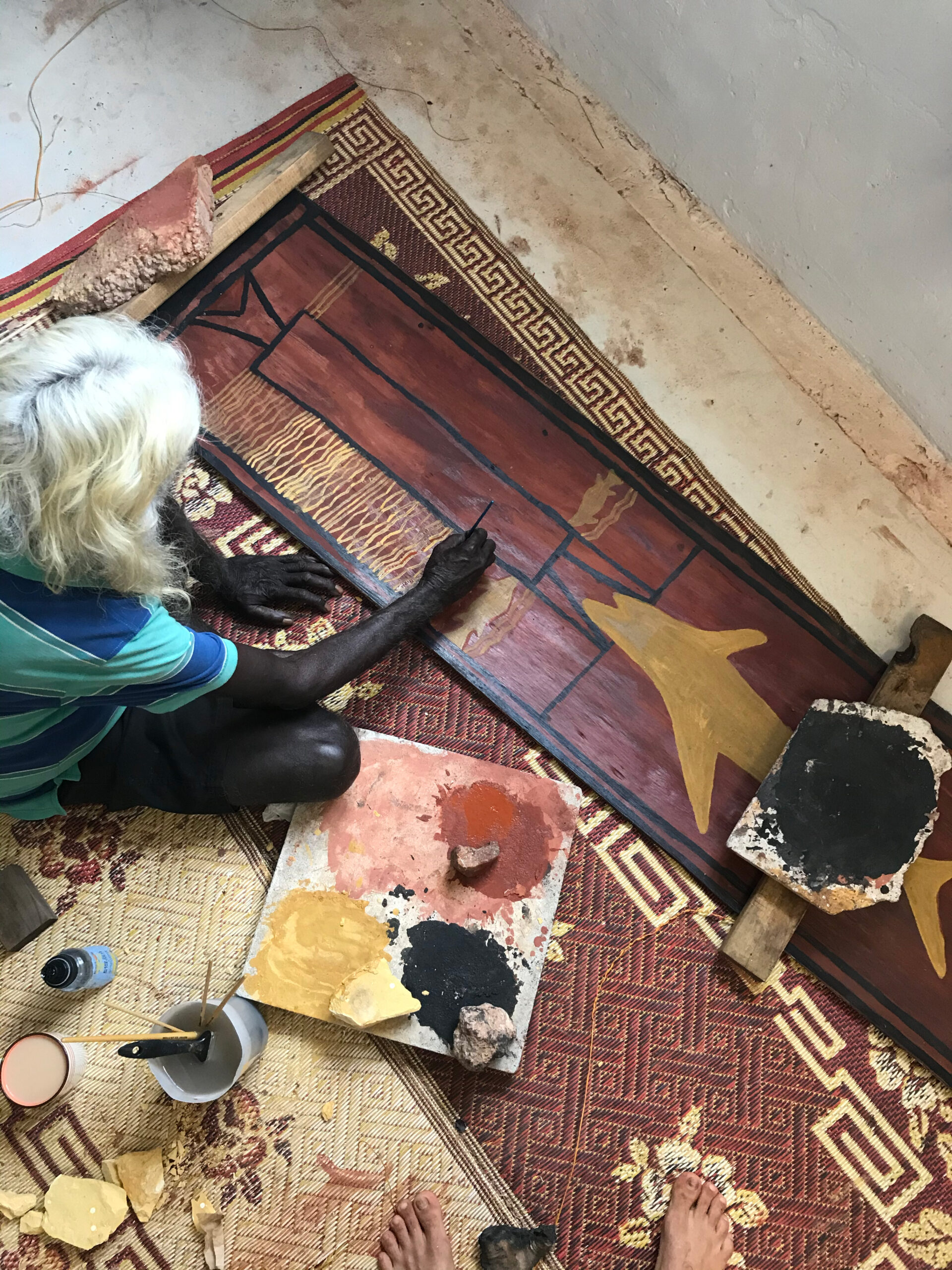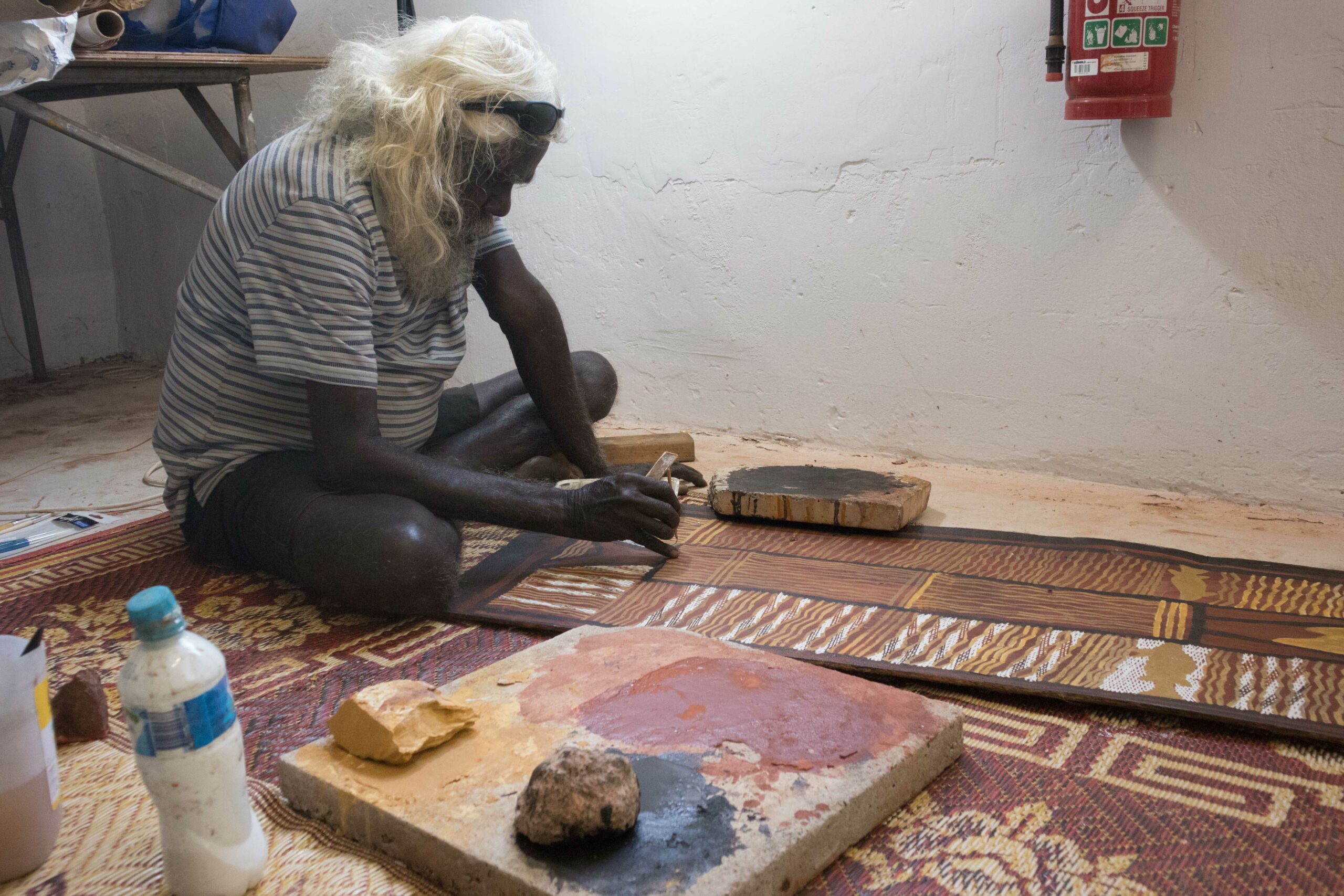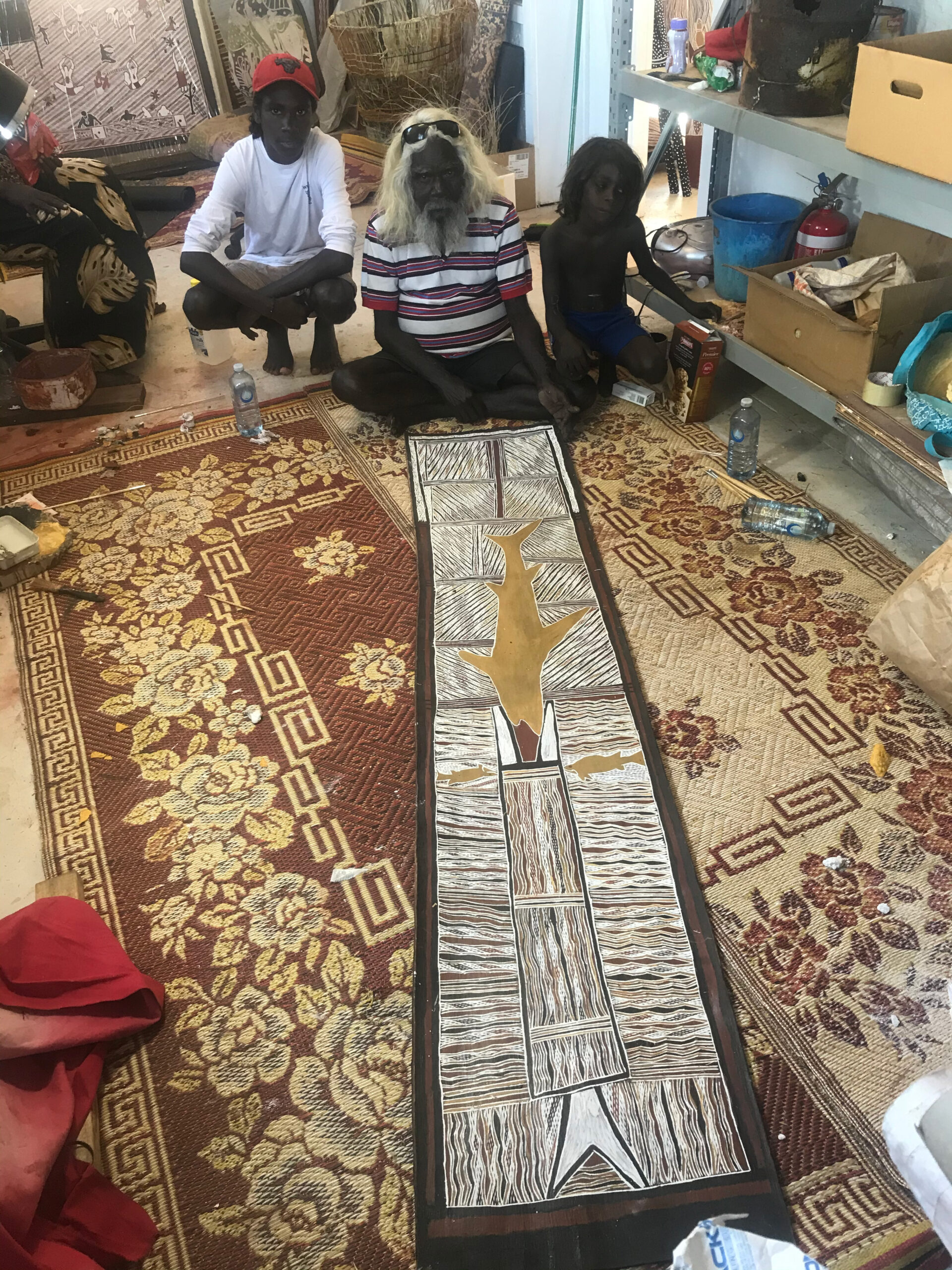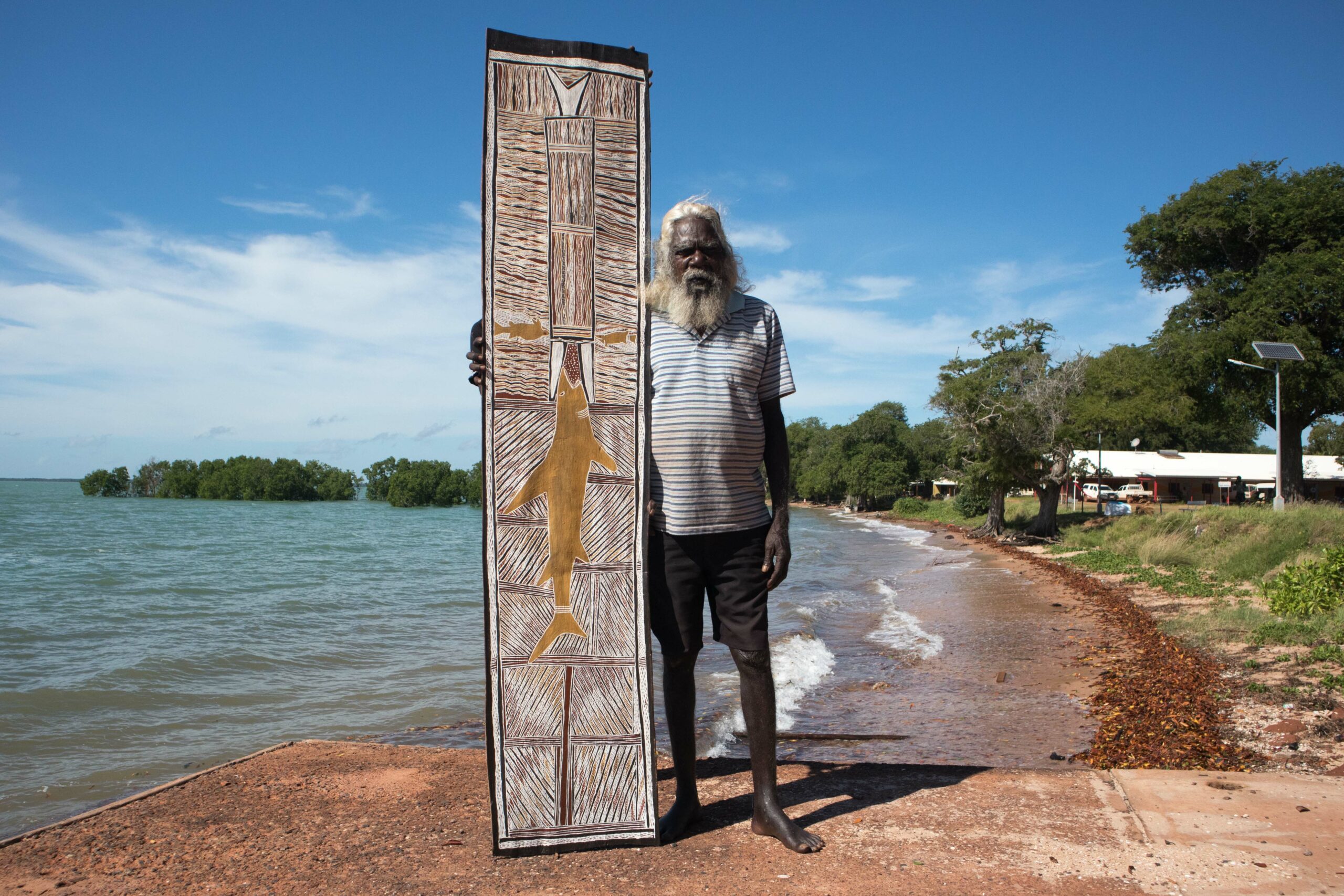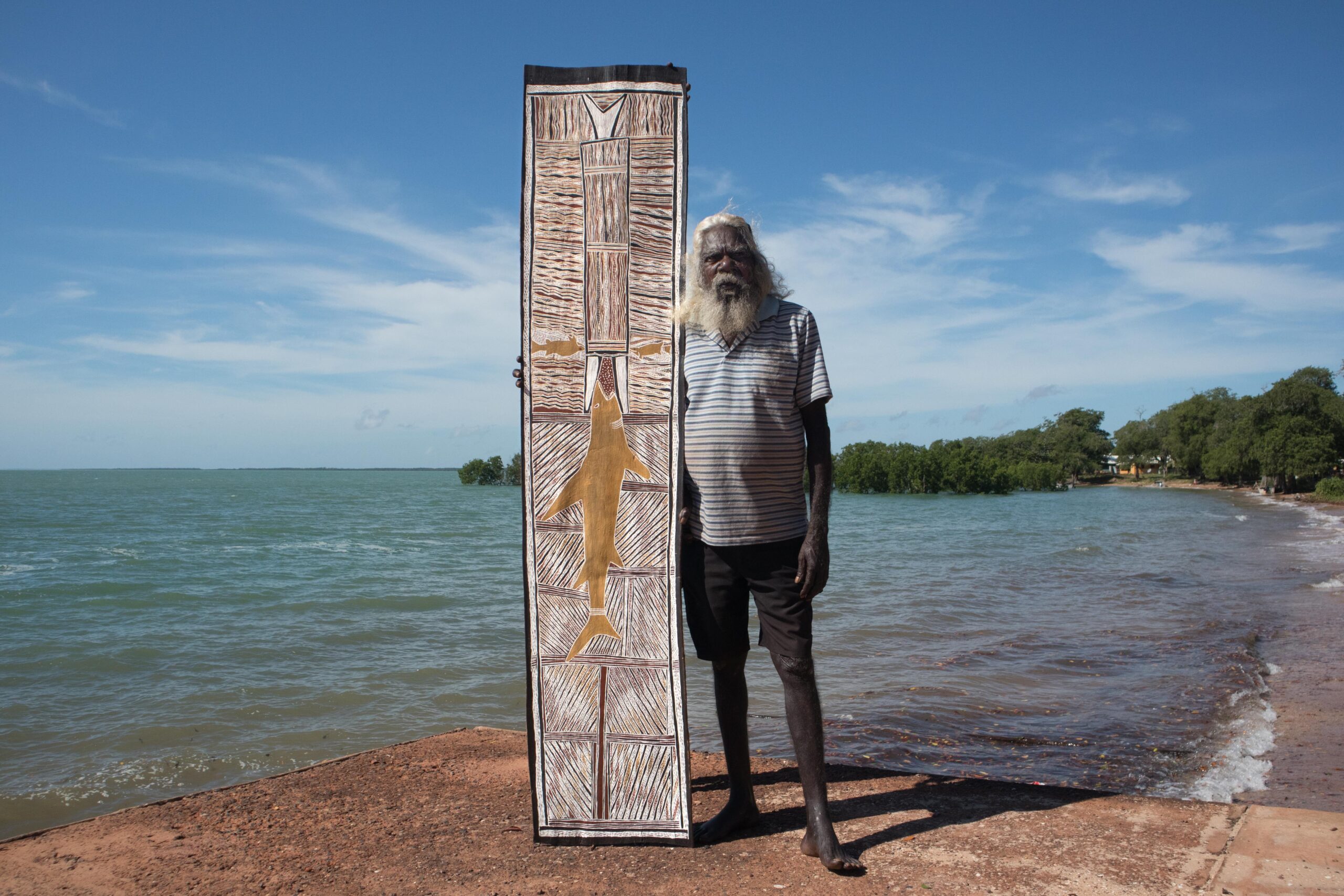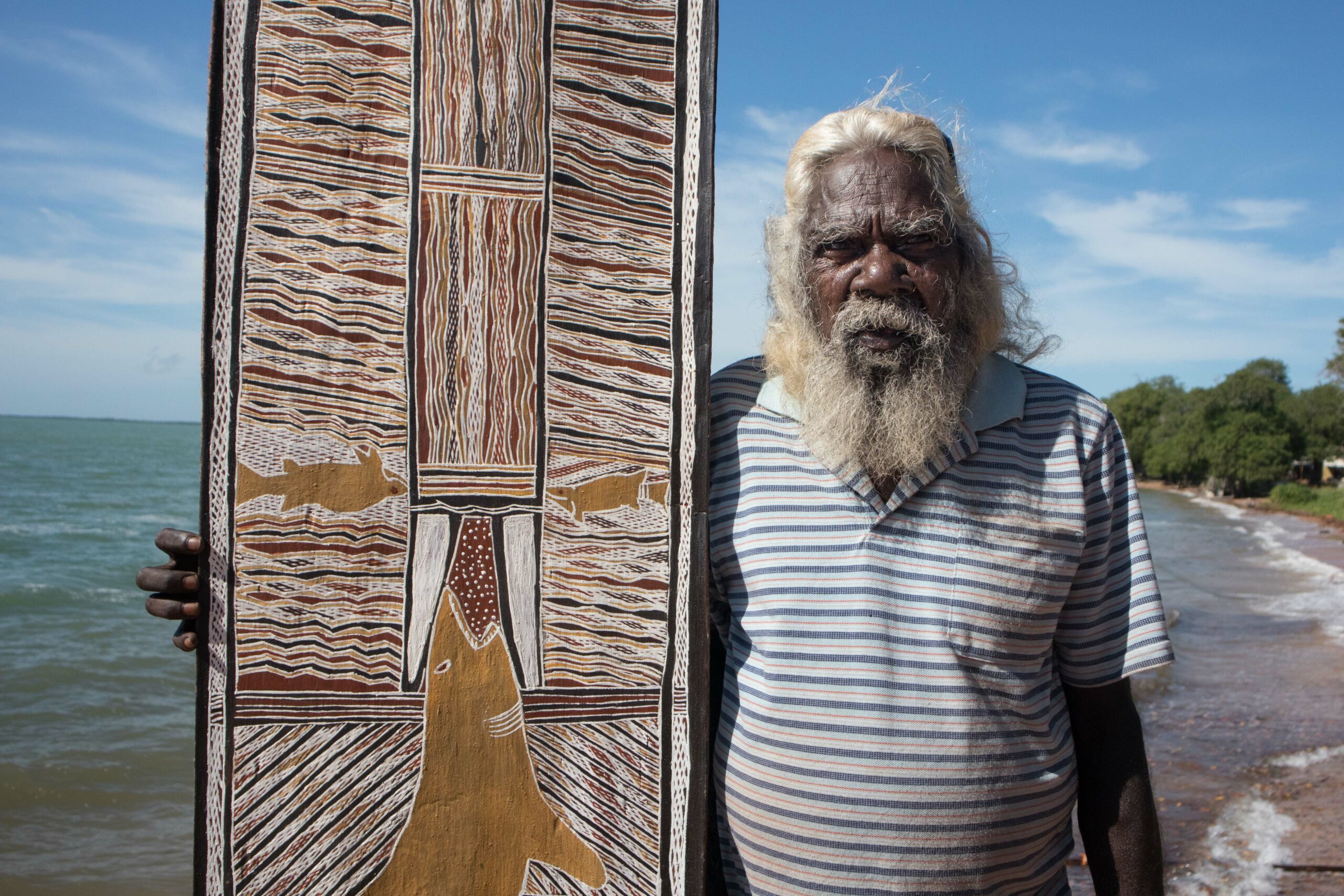
"This is a yindi yäku (big name) place where the Ḏäṯiwuy shark lives. It is called Buḻurruma Ḻukuḻuku, and also Gaḻthunmirri Galthaḏikpa. That place, called Rinydjalŋu, belongs to a troublemaker. At Rinydjalŋu, the Ḏäṯiwuy shark will just see you and take you. In this picture, he was alive, traveling from his home, and he’s alive now—he’s still there, going around. He was there, at his place in the saltwater, and he heard the Yirritja Water Guḻarri coming downstream—Guḻarri, from Dhäliny, from that place. From Muṯuwili, from Dhanaraŋala Guyambiyambi— the two “big name” Yirritja places of the Wangurri clan.
The Yirritja Water was singing out the songlines, singing all the place names along that journey. He called it out, “dhaaaaa o!” And what was the Water ancestor carrying as it went along? The kernels of cycad nuts—cycad nuts that we pound, in a bag, in a dillybag, a ŋaḻiwarrkarr, in a string bag known as a murrmiri.
The Stone ancestor came along and planted its legs in the ground, the legs of the stone, that sacred rock Dhukururru. "
– WILSON MANYDJARRI GANAMBARR
More Info
This painting depicts the Dhuwa moiety Mäṉa (ancestral shark), who inhabits a site named at the boundary of Ḏäṯiwuy and Wangurri clan estates east of Galiwin’ku (Elcho Island). Here, the Yirritja moiety Gapu Guḻarri (fresh water) and Dhuwa moiety Gapu Murrupu (saltwater) mix. Conceptually, this merging represents the ceremonial relationship between Ḏäṯiwuy (Dhuwa) and Wangurri (Yirritja) clans. These two clans and their ancestral estates are related to each other as mother and child, a ceremonially binding relationship in the Yolŋu sphere known as Yothu Yindi.
At the top of the work is the Dhukururru (sacred rock), at the mouth of a river or in the language of that country, djarŋguḻk at Dhäliny. This country belongs to the Yirritja clan, Wangurri Munyarryun, the artist’s mother’s country. The rock is inundated by saltwater on high tides which flows around its top half while heavier fresh river water continues to flow around its base.
In this story Mäṉa is swimming south from the Ḏäṯiwuy homeland Rorruwuy, following Dhuwa moiety saltwater currents which are depicted by rärrk (cross-hatching). When encountering the Dhukururru on a high tide, Mäṉa attempts to swim through the legs of the Dhukururru and gets stuck. The Dhukurrurru then asks Mäṉa in Wangurri language, "please don’t swim through my legs or cover my eyes, swim around my head." Mäṉa agrees and then says to the Dhukururru speaking his Ḏäṯiwuy language, "Mother, don't make the water dirty, I'll swim over the top of you so I can see."
Watch Manydjarri perform the manikay (ceremonial songs) for the Ḏäṯiwuy homelands of Rorruwuy:
– Milingimbi Art and Culture
Additional Information
Decade
2021
Medium
Natural pigments on eucalyptus bark
Dimensions (IN)
84 15/32 x 17 5/16
Dimensions (CM)
214.5 x 44
Credit
Collection of Richard Klingler and Jane Slatter
Narrative
Ḏäṯiwuy
The Ḏäṯiwuy clan belongs to the Dhuwa moiety. Major spiritual themes of the Däṯiwuy clan...
Narrative
Wangurri
The Wangurri homeland is at Dhalinybuy, a freshwater community on the Cato River surrounded by...
Location
2020s
The story of Yolŋu art from northeast Arnhem Land shows no signs of stopping. Watch...
About The Artist(s)

Clan
Ḏäṯiwuy
Artist Dates
Born c.1945
Alternative Names
Majiri, Matyiri
Wilson Manydjarri Ganambarr
The son of Mowarra Ganambarr, Manydjarri Ganambarr is the current leader of the Ḏäṯiwuy clan. He splits his time between Milingimbi, Yirrkala and Galiwin’ku (Elcho Island) and has painted for all three art centers. He is an extremely knowledgeable and powerful song man who paints intricate designs from both his mother’s and father’s estates.
Collections Represented
Kluge-Ruhe Aboriginal Art Collection of the University of Virginia

